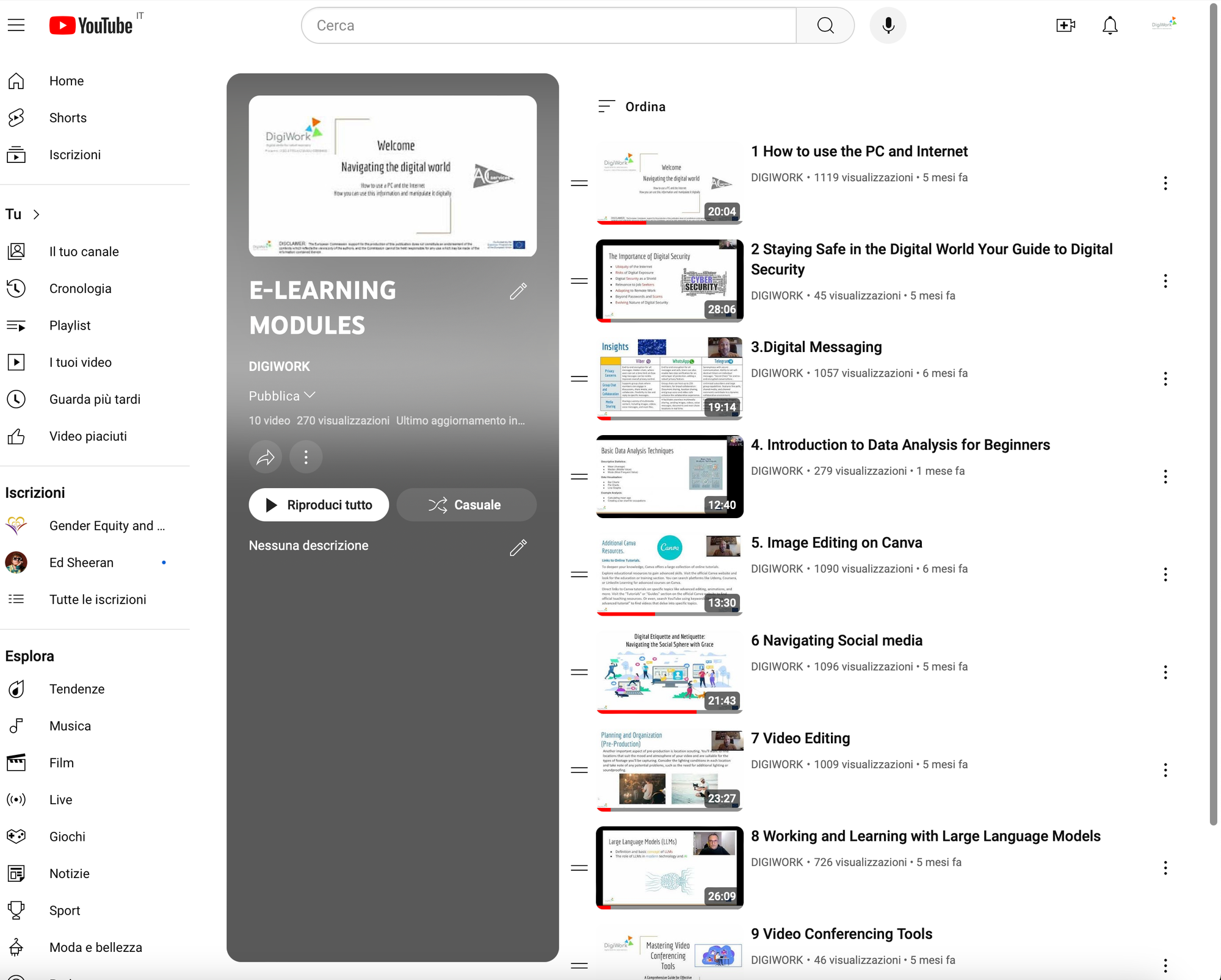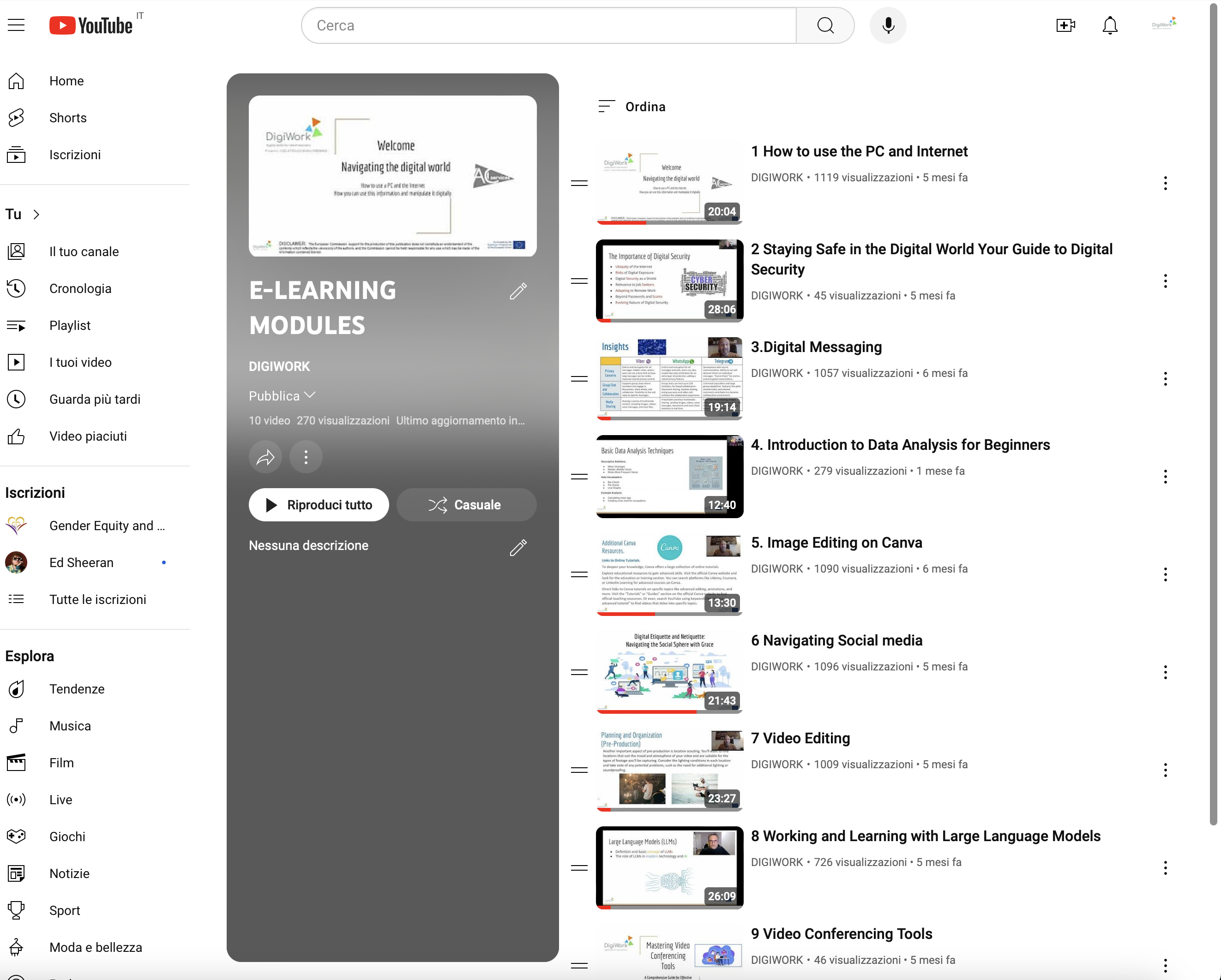Explore our 10 video courses on YouTube to boost your digital skills! Start learning today: urly.it/310m_1

The development of the 10 self-learning video modules for the DigiWork project was a meticulously planned and executed process aimed at empowering adults over 45 with essential digital skills. These modules were designed to be accessible, engaging, and highly practical, ensuring that learners could easily follow along and apply their new skills in real-life situations.1. Planning and Content Development The process began with a thorough needs assessment, where feedback from initial focus groups and surveys was analyzed to identify the most critical areas where digital skills were lacking. Based on this, the project team developed a curriculum that covered a wide range of topics, from basic computer use to advanced topics like working with large language models (LLMs). Each module was crafted to address specific skill gaps, with a strong emphasis on practical application.2. Scriptwriting and Storyboarding Once the curriculum was established, the next step was scriptwriting and storyboarding. The content was written to be clear and straightforward, using language that was accessible to learners with varying levels of digital literacy. The storyboards were designed to provide a visual guide for the video production team, ensuring that each module was not only informative but also visually engaging.3. Video Production The production phase involved recording high-quality video content, incorporating both on-screen demonstrations and voice-over explanations. The use of real-world scenarios and examples was prioritized to help learners relate the content to their own experiences. To enhance the learning experience, each module included interactive elements such as quizzes, practical exercises, and downloadable resources.

4. Testing and Feedback Integration Before finalizing the modules, they underwent a rigorous testing phase. Small groups of learners were invited to participate in pilot sessions where they interacted with the video content and provided feedback on its clarity, usability, and relevance. This feedback was invaluable, leading to several refinements in the content and presentation. Adjustments were made to ensure that the modules were not only educational but also enjoyable and easy to navigate.5. Finalization and Publishing After incorporating the feedback, the final versions of the 10 video modules were completed. These modules were then published on the project’s YouTube channel, making them widely accessible to the target audience. The platform choice was strategic, given its widespread use and ease of access, particularly among the target group of adults over 45.6. Ongoing Support and Updates To support learners in their self-learning journey, additional resources such as a guide on how to use the video modules effectively were provided. The project team remains committed to updating the content as needed, based on ongoing feedback and the evolving digital landscape.7. Impact and Reach Since their release, the video modules have garnered significant engagement, with over 500 subscribers to the YouTube channel and thousands of views. The modules have not only provided immediate educational benefits but have also laid the groundwork for ongoing digital literacy among the target demographic.